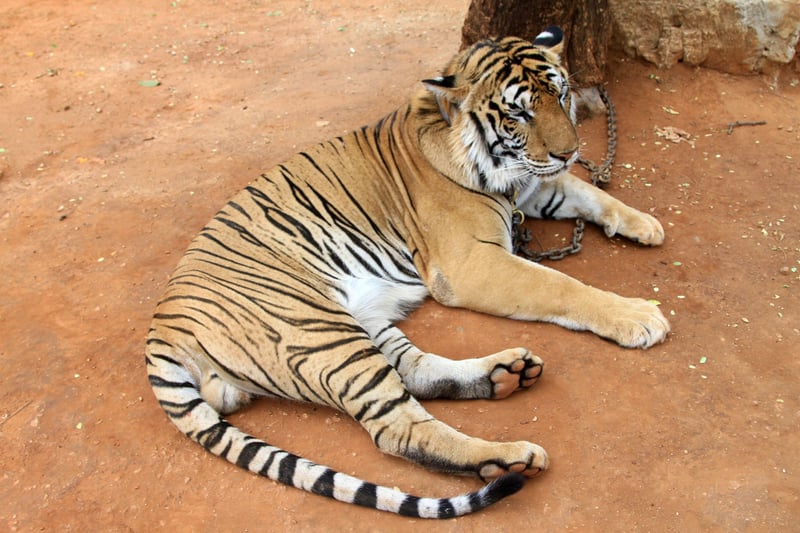
Lalgarh tiger death points to shortcomings in wildlife rescue and importance of securing habitat
News
World Animal Protection is dismayed to learn that the tiger spotted in Lalgarh in West Bengal has been killed, reportedly by local hunters who used spears, bows and arrows to kill the cornered creature on 13th April.
The tiger had been roaming a 30 sq km swathe of forests stretching across Jhargram, West Midanpore and Bankura districts since 2nd March when it was spotted first. From drones to live traps and tranquilising teams, forest officials had tried different techniques to capture the animal but all these efforts failed, leading to the death of the tiger at the hands of the local villagers who indulge in ritual hunting.
It is currently the hunting season for tribals that has led to massive killing of all kinds of wild animals and has also seen the killing of India’s national animal that is protected under Schedule I of the Wildlife Protection Act. It has also come to light that several protocols laid by National Tiger Conservation Authority for tackling tigers in conflict situations were violated during the attempts to capture the tiger and the area in the vicinity of where the tiger was spotted was not adequately secured.
“We call upon the state government to involve experts from outside in case they lack the requisite ability to humanely tackle conflict situations involving tigers and other species of endangered wildlife in Bengal. We reiterate our original request of humane and professional handling of all animals caught in conflict situations, effective coordination between all departments, enhanced sensitivity among the local populace for protecting wildlife and responsible media reporting to highlight the problems involved in human-wildlife conflict situations, especially involving big cats,” said Gajender K Sharma, India Country Director, World Animal Protection.
World Animal Protection strongly urges a proper investigation into the death of this tiger at the hands of hunters and strict implementation of the Wildlife Protection Act with regards to any ritual practices that kill large numbers of wild animals.
“We urge the authorities to bring to book those responsible for killing the tiger and punish them along with those who failed in their duty to secure the safety of this migrant animal,” Gajender added further.
World Animal Protection also notes with pleasure the move to consider the areas covering Mahadayi, Mollem, Cotigao and Netravali--located in the Western Ghat region in Goa as part of a new Tiger Reserve. Whilst welcoming the move to declare more tiger reserves, World Animal Protection calls for a comprehensive review of all aspects of the tiger habitat combined with capacity building for handling human-wildlife conflict situations as so starkly evidenced in the case of the Lalgarh tiger that was so brutally killed only for the crime of following his own instinct. The tiger is the National Animal of India and World Animal Protection can only emphasise the most stringent implementation of all legislation to save this magnificent creature so that they roam free in Indian forests and wildlife belongs in the wild.
For more information and images, contact:
Shashwat Raj, Communications Manager – India, World Animal Protection
shashwatraj@worldanimalprotection.org.in
“We urge the authorities to bring to book those responsible for killing the tiger and punish them along with those who failed in their duty to secure the safety of this migrant animal, Gajender K Sharma.